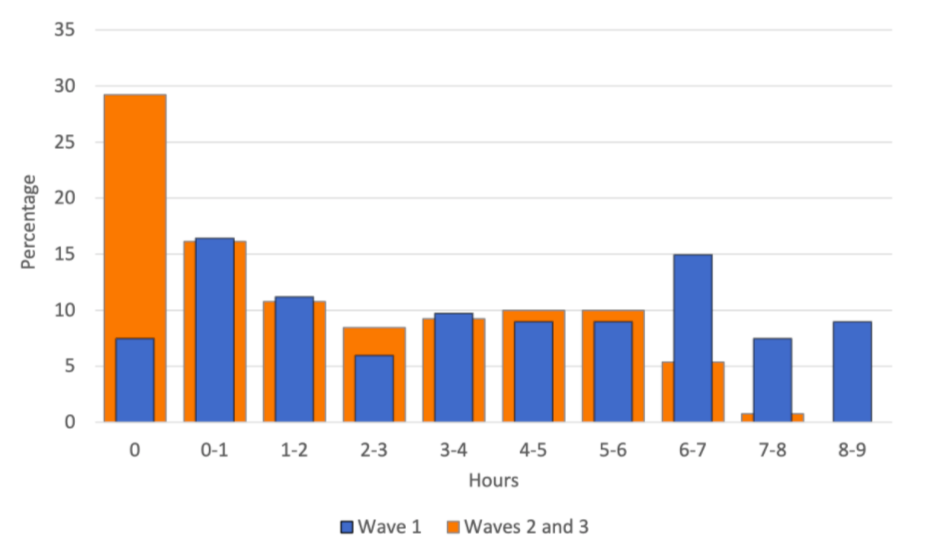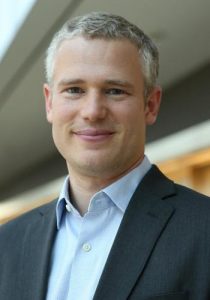As Schools Push for More Tutoring, New Research Points to Its Effectiveness — and the Challenge of Scaling it To Combat Learning Loss

Get stories like these delivered straight to your inbox. Sign up for The 74 Newsletter
During the two years that COVID-19 has upended school for millions of families, education leaders have increasingly touted one tool as a means of compensating for lost learning: personalized tutors. As a growing number of state and federal authorities pledge to make high-quality tutoring available to struggling students, a new study demonstrates positive, if modest, results from an experimental pilot that launched last spring.
The program’s effects suggest that more exposure to supplemental instruction could yield still greater benefits. But design limitations, particularly those stemming from a pronounced shortage of qualified tutor candidates, also raise the question of whether it can be offered on the scale that some advocates envision.
The paper was released only days after U.S. Secretary of Education Miguel Cardona declared, in a speech laying out his department’s priorities for the coming year, that every student who has lost ground during the pandemic should receive 90 minutes of tutoring each week. A number of states and large districts have already established tutoring initiatives over the last year, typically underwritten by emergency relief funds from Washington.
That push has been backed by a flood of research indicating that high-quality, high-dosage tutoring can help children realize almost unheard-of learning progress. The bulk of that literature — reviewed in a 2020 meta-analysis of nearly 100 randomized controlled trials — focused on instruction that was delivered in-person, though several COVID-era papers from Europe have also shown significant academic gains resulting from online tutoring.
To further investigate the virtual approach, researchers at the University of Chicago, Brown University, and the University of California San Diego helped organize a pilot in Chicago Heights, Illinois, a city roughly 30 miles south of downtown Chicago. Partnering with CovEd, a nonprofit mentorship organization founded by college students in 2020, the research team recruited 230 volunteer instructors and paired them with local middle schoolers for regular, one-on-one sessions held over Zoom. Students enrolled in the Chicago Heights school district are overwhelmingly poor and non-white, and only about one-quarter were meeting grade-level standards in math and reading before the pandemic.
Partly owing to the challenge of recruiting volunteers, participating students were organized into three waves that began accessing their tutoring at different times over a 12-week period. On average, students in the first wave received about four hours of total tutoring, while those in the following waves received a little over two hours. In keeping with prior research findings, students in the first wave saw more learning growth (as measured by performance on standardized tests) than those who were tutored less. While the results were not large enough to be classified as statistically significant, said co-author Matthew Kraft, they provide further evidence that the achievement gains from tutoring will accelerate when delivered in higher dosages.

“There’s this explicit interpretation, which I’ve written about in my own work, that higher amounts of tutoring produce better results,” said Kraft, a professor of education at Brown. “What we do see very clearly is this difference across our higher- vs. lower-dosage waves, which were consistent with that pattern.”

Still, he acknowledged, the boost that came from a comparatively brief, low-cost tutoring pilot was “much smaller” than the average effects found in some earlier studies. That can partially be explained by the program’s design: It leveraged the volunteer labor of undergraduates — rather than highly trained teachers or paraprofessionals, who have been shown to be more effective as tutors — and carried out instruction digitally rather than in person. But the cost-efficient nature of the experiment — among its few expenses was a $50 Zoom account — may recommend its model to educational leaders wondering how to pay for tutoring once federal relief funds are depleted.
“It was a very low-cost model,” Kraft said. “That’s something that I think districts are struggling with, despite having pretty substantial amounts of federal aid to work with, at least in the short- to medium-term. They recognize that there’s going to be a financial cliff, so how do you build something you don’t have to just abandon?”
A problem of scale
Both the study’s potential and its constraints are notable at a moment when states and districts are laboring mightily to establish their own tutoring interventions. High-profile efforts in Chicago, Dallas, and Colorado have mobilized millions of dollars in public and philanthropic money in the hopes of reaching thousands of kids who lost ground during months of school closures. A recent analysis from data tracker Burbio showed that roughly one-third of districts planned to spend relief funds on tutoring.
But the frenzied start-up phase necessitates filling hundreds, or even thousands, of new positions; that kind of hiring blitz would be a daunting prospect in the best of times, but it has become especially thorny under the current economic conditions. While they would undoubtedly prefer to use current or former teachers to staff their programs, a historically tight labor market has already led to shortages in core instructional positions.
The struggle to recruit qualified tutors is “no different in kind from the staffing challenge they are experiencing for every job within a school system right now,” said Mike Magee, CEO of Chiefs for Change. “The same market forces are impacting staffing in tutoring as are impacting staffing in teaching and bus drivers, etc. It does make scaling promising efforts significantly more difficult.”
Tennessee is one of the states that has experimented most energetically with tutoring, launching a $200 million initiative last year that seeks to reach 150,000 struggling students. Schools in Elizabethton, a rural district serving around 2,600 students, are among the 79 districts that have chosen to participate in the Tennessee Accelerating Literacy and Learning Corps, offering small-group tutoring to students scoring below proficient in state reading exams.
Myra Newman, Elizabethton’s assistant superintendent for instruction, said that school teachers and principals “have seen the benefits” of the tutoring, which she hopes will be evident when students sit for their spring exams. But for the moment, the district provides only one tutor (accompanied by several assistants) for each school, and tutoring sessions are offered in a three-to-one format, rather than one-to-one.
“We wouldn’t have personnel — or the funds to hire the personnel — to do one-on-one,” Newman said. “But a three-to-one ratio is pretty good because they still get some individualized attention, and some modeling for their peers.”
Magee argued that, whatever the pitfalls faced by school systems abruptly setting up their tutoring initiatives, the learning emergency presented by COVID necessitated rapid action; while some of the programs in the field may not adhere to the ideal held up in research, they can play a critical role in stemming further learning loss now.
“In a crisis like the one we’re experiencing, which is generational in its negative impact on students, you might well want to move faster and accept some amount of downsides in order to reach as many students as possible,” he said.
But Kraft, who has been a consistent and influential advocate for states devoting increased resources to tutoring, sounded a cautionary note to district leaders.
“There is a tradeoff in navigating the current climate where what is possible might not be scalable. So instead of just saying, ‘Come hell or high water, I’m going to build a huge tutoring program,’ we might be better off starting off with a small program and building it over time, in a sustainable way — rather than cutting corners or changing the model.”
Get stories like these delivered straight to your inbox. Sign up for The 74 Newsletter


